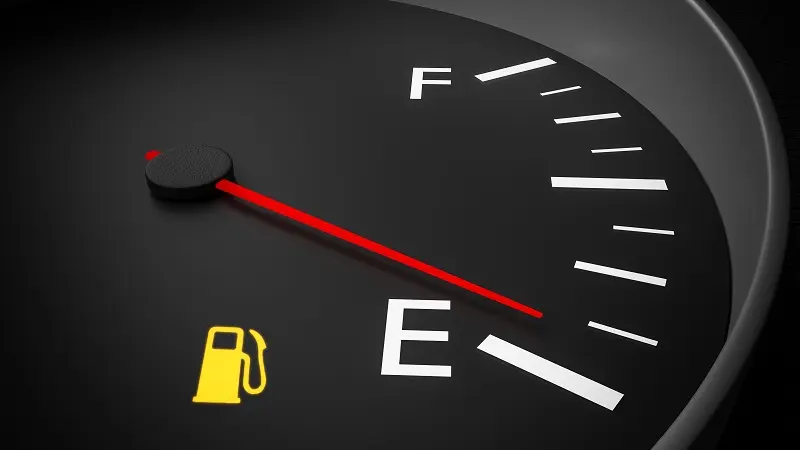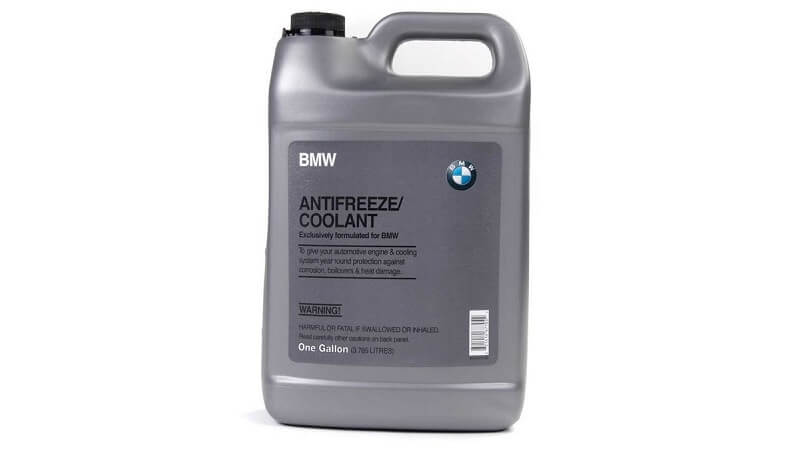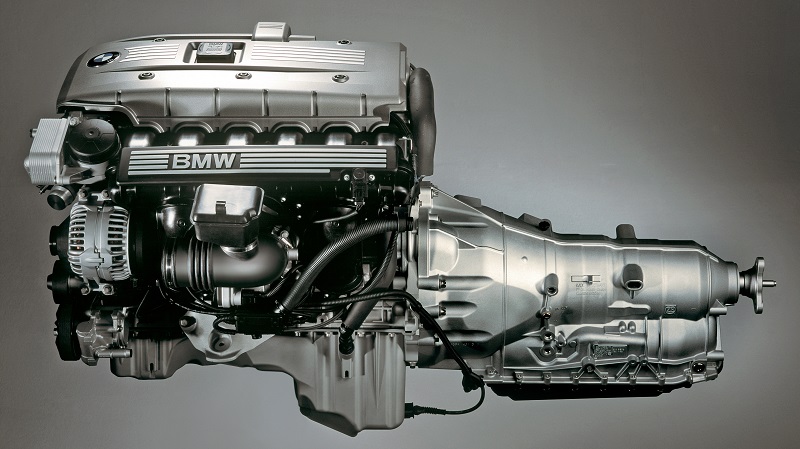When the check engine light illuminates on your BMW’s dashboard, it’s essential not to ignore it, as it often indicates an underlying issue that requires attention. One of the codes that BMW owners might come across is the enigmatic “29D9” code. While it is commonly associated with fuel-related problems, its meaning goes beyond just a low fuel level. In this blog post, we will delve into the details of the 29D9 BMW code, exploring its significance in diagnosing vehicle issues and understanding the potential causes it may represent.
Whether you’re experiencing a drop in fuel efficiency, rough idling, or other related symptoms, it’s crucial to grasp the meaning behind this code and its broader context in BMW vehicles. While low fuel pressure is a common culprit, there are other factors that could contribute to the 29D9 code manifestation, making a precise diagnosis all the more crucial.

Understanding the 29D9 BMW Code
The 29D9 BMW code, “misfiring in case of tank filling level too low,” is a specific diagnostic trouble code (DTC) that BMW vehicles use to identify a particular issue related to the engine’s fuel system. This code is part of the onboard diagnostics system, commonly known as OBD-II, which monitors and detects potential problems within various vehicle components, including the engine and emissions systems.
When this code appears, it indicates a misfiring occurrence in the engine cylinders, specifically triggered when the fuel tank’s filling level drops too low. The primary purpose of this code is to alert the driver and automotive technicians that misfiring is happening due to insufficient fuel in the tank, which can lead to potential engine performance issues and further complications if not addressed promptly.
Misfiring in an engine occurs when one or more cylinders fail to ignite the air-fuel mixture at the right time, disrupting the combustion process. This can lead to a range of symptoms, such as rough idling, reduced engine power, increased emissions, and decreased fuel efficiency.
The connection between the 29D9 code and low fuel level serves as a reminder for BMW owners to avoid driving with extremely low fuel in the tank. Operating the vehicle with minimal fuel can cause fuel pump issues, as the fuel serves as a coolant and lubricant for the pump. Moreover, the risk of drawing debris or contaminants from the bottom of the tank increases when fuel levels are critically low, potentially causing damage to the fuel system and injectors.
It is important to note that while the 29D9 code directly relates to low fuel levels causing misfiring, it is still essential to consider other factors that might contribute to engine misfires. Routine maintenance, such as replacing spark plugs, inspecting ignition coils, and ensuring a clean fuel system, can prevent misfires and optimize engine performance.
In the following sections, we will delve deeper into the symptoms, potential causes, and the diagnostic process involved in handling the 29D9 code accurately. Understanding these aspects will give you the necessary tools to take appropriate actions and maintain your vehicles’ reliability and efficiency.
Symptoms of the 29D9 Code
The appearance of the 29D9 BMW code, indicating misfiring due to low tank filling level, can lead to several noticeable symptoms. These indicators are essential in alerting BMW owners to a potential issue within their vehicle’s fuel system. Recognizing these symptoms promptly can help prevent further damage and ensure timely repairs. Here are some common signs associated with the 29D9 code:
- Rough Idle — One of the most noticeable symptoms is an irregular or rough idling engine. The engine may exhibit unstable RPMs, causing vibrations throughout the vehicle.
- Engine Misfires — The misfiring related to the 29D9 code can lead to engine misfires, which may feel like brief hiccups or stumbles during acceleration or while driving.
- Loss of Engine Power — Drivers may experience a decrease in engine power, resulting in sluggish acceleration and reduced overall performance.
- Illuminated Check Engine Light — The 29D9 code triggers the check engine light to turn on, indicating that the onboard diagnostics system has detected an issue.
- Difficulty Starting the Engine — In severe cases, low tank filling level-related misfiring might make it challenging to start the engine, especially after running out of fuel entirely.
It’s crucial for BMW owners to take note of any of these symptoms and not ignore the illuminated check engine light. While low fuel level is the primary trigger for the 29D9 code, it’s possible for other underlying issues to cause similar symptoms.
Possible Causes of the 29D9 Code
The 29D9 BMW code, indicating misfiring due to low tank filling level, can be caused by various factors. While the primary trigger is the low fuel level in the tank, there are other potential culprits that can contribute to engine misfires. Understanding these possible causes is crucial in accurately diagnosing the issue and implementing effective solutions. Here are the key factors to consider:
Low Fuel Level
As the code name suggests, running the vehicle with an extremely low fuel level can lead to misfiring. The fuel pump relies on the fuel to cool and lubricate its internal components. Insufficient fuel can cause the pump to overheat and lead to misfires.
Contaminated Fuel
If the fuel in the tank is contaminated with debris, water, or impurities, it can affect the combustion process and lead to misfires. Contaminants can clog fuel injectors or disrupt the proper mixture of air and fuel in the cylinders.
Faulty Fuel Pump
A malfunctioning fuel pump can cause low fuel pressure, leading to misfiring. A weakened or failing fuel pump may struggle to supply the required amount of fuel to the engine.
Clogged Fuel Filter
A clogged fuel filter restricts the flow of fuel to the engine, potentially causing misfires. The filter’s function is to trap contaminants and prevent them from reaching the fuel injectors, but if it becomes excessively clogged, it can impede fuel delivery.
Dirty or Worn Spark Plugs
Spark plugs play a crucial role in igniting the air-fuel mixture in the engine cylinders. If they are dirty, fouled, or worn out, they may not provide a strong enough spark, resulting in misfires.
Ignition Coil Issues
The ignition coils are responsible for converting the battery’s low voltage into high-voltage sparks needed to ignite the fuel. A faulty ignition coil can lead to misfires in the corresponding cylinders.
Vacuum Leaks
Air leaks in the engine’s intake system can disrupt the air-fuel mixture ratio, causing misfires. Leaks can occur in vacuum hoses, intake manifold gaskets, or other components.
DME (ECU) Malfunction
The DME (ECU), which controls various engine functions, may experience glitches or malfunctions, leading to misfires.
It’s essential to consider all these potential causes when diagnosing the 29D9 code accurately. Conducting a thorough inspection of the fuel system, spark plugs, ignition coils, and intake system can help pinpoint the root cause of the misfiring issue.
In the next section, we will delve into the diagnostic process involved in handling the 29D9 code, outlining the steps required to identify the exact cause and ensure effective repairs. Additionally, we will discuss the importance of seeking professional expertise when dealing with complex engine issues.
Diagnostic Process
Diagnosing the 29D9 BMW code, which indicates misfiring due to low tank filling level, requires a systematic approach to identify the precise cause of the issue. Here’s an outline of the diagnostic process involved in handling the 29D9 code:
- Retrieve and Record the Code — Begin by using a diagnostic scanner or code reader to retrieve the 29D9 code and any additional related codes stored in the vehicle’s onboard computer. Make a note of the codes for reference during the diagnostic process.
- Check Fuel Level — Verify the fuel level in the tank to ensure it is not critically low. If the tank is empty or nearly empty, it is vital to add an adequate amount of fuel before proceeding with further diagnostics.
- Visual Inspection — Perform a visual inspection of the fuel system components, including the fuel pump, fuel filter, and fuel lines. Look for signs of leaks, damage, or contamination that may be affecting the fuel delivery to the engine.
- Fuel Pressure Test — Conduct a fuel pressure test to determine if the fuel pressure falls within the manufacturer’s specified range. Low fuel pressure can indicate a faulty fuel pump, clogged fuel filter, or other fuel system issues.
- Check Spark Plugs and Ignition Coils — Inspect the condition of the spark plugs and ignition coils. Replace any worn-out or damaged spark plugs and test the ignition coils for proper functionality.
- Address Vacuum Leaks — Inspect the engine’s intake system for any signs of vacuum leaks. Use a smoke tester or similar diagnostic tool to identify and address any leaks that may be affecting the air-fuel mixture.
- Perform DME Scan — Perform a comprehensive scan of the DME (ECU) to check for any fault codes or anomalies related to engine performance. Address any DME-related issues as necessary.
- Clear Fault Codes and Test Drive — After making any necessary repairs or adjustments, clear the fault codes from the DME. Take the vehicle for a test drive to ensure that the misfiring issue has been resolved and that the code does not reappear.
It’s important to note that diagnosing the 29D9 code can be challenging, especially if multiple issues are contributing to the misfiring problem. However, a slow and methodical diagnostic approach will get you across the finish line.
Addressing the Issue
Misfiring due to a low tank filling level can be a concerning issue for BMW owners, affecting the engine’s performance and overall driving experience. Addressing this problem quickly is crucial to avoid further complications and potential damage to the vehicle. Here are the steps to effectively tackle the misfiring issue associated with the 29D9 code:
Refuel the Vehicle
If the 29D9 code is triggered due to a low fuel level, the first step is to refuel the vehicle with a sufficient amount of high-quality fuel. Avoid driving with extremely low fuel levels, as this can cause fuel pump issues and potentially lead to engine misfires.
Check for Contaminated Fuel
If the fuel in the tank appears to be contaminated, it’s essential to drain the tank and replace the fuel with fresh, clean fuel. Contaminants can clog fuel injectors and disrupt the combustion process, leading to misfires.
Replace Worn-out Spark Plugs
Worn or fouled spark plugs can contribute to misfiring. Inspect the spark plugs and replace any that show signs of wear or damage. High-quality spark plugs are essential for efficient ignition and optimal engine performance.
Inspect and Test Ignition Coils
Faulty ignition coils can result in misfires. Test the ignition coils to ensure they are functioning correctly, and replace any that show signs of failure.
Check Fuel System Components
Inspect the fuel pump, fuel filter, and fuel lines for any damage, leaks, or clogs. Address any issues found during the inspection, as they can affect the fuel delivery and contribute to misfiring.
Address Vacuum Leaks
Vacuum leaks can disrupt the air-fuel mixture and cause misfiring. Inspect the intake system for any leaks and repair or replace affected components as needed.
Clear Fault Codes
After addressing the underlying issues contributing to misfiring, clear the fault codes from the vehicle’s onboard computer using a diagnostic scanner. This will reset the check engine light, allowing you to monitor the vehicle’s performance after the repairs.
Regular Maintenance
To prevent future occurrences of the 29D9 code and misfiring issues, adhere to regular maintenance schedules for your BMW. This includes periodic fuel system checks, spark plug replacements, and overall engine health assessments.
Frequently Asked Questions (FAQs)
Q: What does the 29D9 BMW code mean?
A: The 29D9 BMW code indicates “misfiring in case of tank filling level too low.” It is triggered when the engine misfires due to extremely low fuel levels in the tank.
Q: Can I continue driving with the 29D9 code triggered?
A: While it might be possible to continue driving with the 29D9 code present, it is not recommended. Misfiring can lead to engine performance issues and potential damage. It’s best to address the issue promptly to avoid further complications.
Q: How can low fuel levels cause misfiring?
A: Low fuel levels can affect the fuel pump’s functionality, as fuel serves to cool and lubricate the pump. Running the vehicle with minimal fuel can cause the pump to overheat, leading to misfiring.
Q: What should I do if the 29D9 code appears?
A: If the 29D9 code appears, the first step is to refuel the vehicle with an adequate amount of fuel. Next, check for contaminated fuel, inspect spark plugs and ignition coils, and examine the fuel system components. Seek professional assistance if needed to accurately diagnose and resolve the issue.
Q: Can other factors besides low fuel levels cause the 29D9 code?
A: While low fuel levels are the primary trigger, other factors can contribute to engine misfires and the appearance of the 29D9 code. These include contaminated fuel, faulty ignition components, vacuum leaks, and DME malfunctions.
Q: How can I prevent the 29D9 code from occurring in the future?
A: To prevent the 29D9 code and associated misfiring issues, follow a few essential steps: maintain a sufficient fuel level in the tank, use high-quality fuel, adhere to regular maintenance schedules, and promptly address any engine performance concerns.
Q: Can I attempt to diagnose and repair the 29D9 code myself?
A: While basic checks, such as refueling and inspecting visible components, can be done by owners, diagnosing and repairing the 29D9 code often requires specialized knowledge and diagnostic tools. It is recommended to seek professional assistance from a certified BMW technician or qualified mechanic for accurate diagnosis and repairs.
Q: Is the 29D9 code specific to a particular BMW model or year?
A: The 29D9 code is associated with various BMW models and years, but its interpretation remains consistent—misfiring due to low tank filling level. However, symptoms and underlying causes may vary depending on the specific vehicle’s design and engine configuration.
Remember, diagnosing and addressing the 29D9 code promptly is essential for maintaining the optimal performance and longevity of your BMW. Regular maintenance and timely repairs will help ensure a smooth and enjoyable driving experience while keeping your vehicle in top condition.
Fix Your 29D9 Code with Bimmers.com
The 29D9 BMW code, indicating misfiring in case of tank filling level too low, is a crucial diagnostic signal that BMW owners should never overlook. While the code name suggests a direct link to low fuel levels, its implications go beyond just refueling the tank. Misfiring can lead to a range of engine performance issues, affecting the vehicle’s overall driving experience and potentially causing further damage if left unaddressed.
While we don’t stock premium fuel, we do stock premium fueling system components. Head over to our store, select your BMW and find quality parts that will help you get rid of a 29D9 BMW code!






